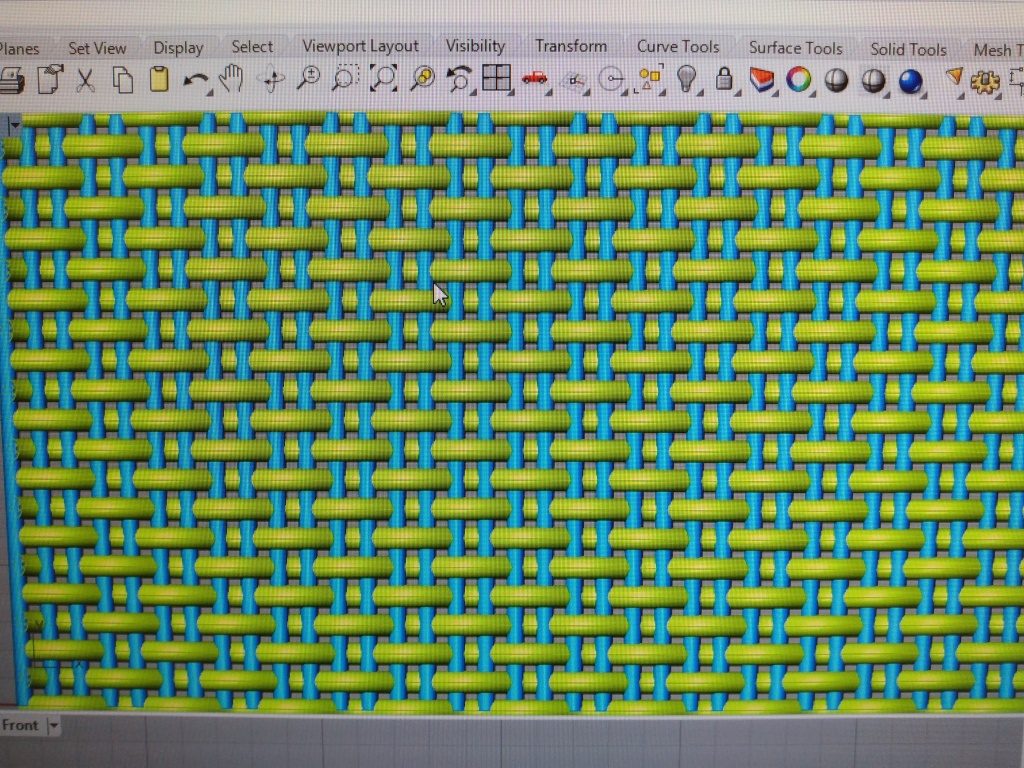This week we had a workshop hosted by Mary Smull. We walked through the terminology we would need to make our way through our floor loom, as well as a quick walkthrough of the different history and techniques that result in different weave types.

After learning how to use a tie-up draft to manually create diagrams of different weave patterns, Ryan Hoover collaborated with us to create a Grasshopper script, which allowed us to use parametric design techniques to quickly test out different weaving patterns in Rhino.

The result is a simulation of a basket weave:

With just a few parameter tweaks, we can get a diamond twill weave:

Finally it was time to do some of my own weaving in the loom. I started with a simple basket weave…

…moving to something slightly more complex, I tried my hand at a twill weave…

…finally I thought I’d go free-form. Thinking back on our class discussions and readings of the loom as a digital machine, I was inspired to see what information I could encode through my threads. Using the template of the numogram (which is based on the number 9), I encoded by raising the treadles so each pair would add up to 9 (1+8, 2+7, 3+6, 4+5, 5+4, 6+3, 7+2, 8+1). What ended up was this interesting diamond pattern…
